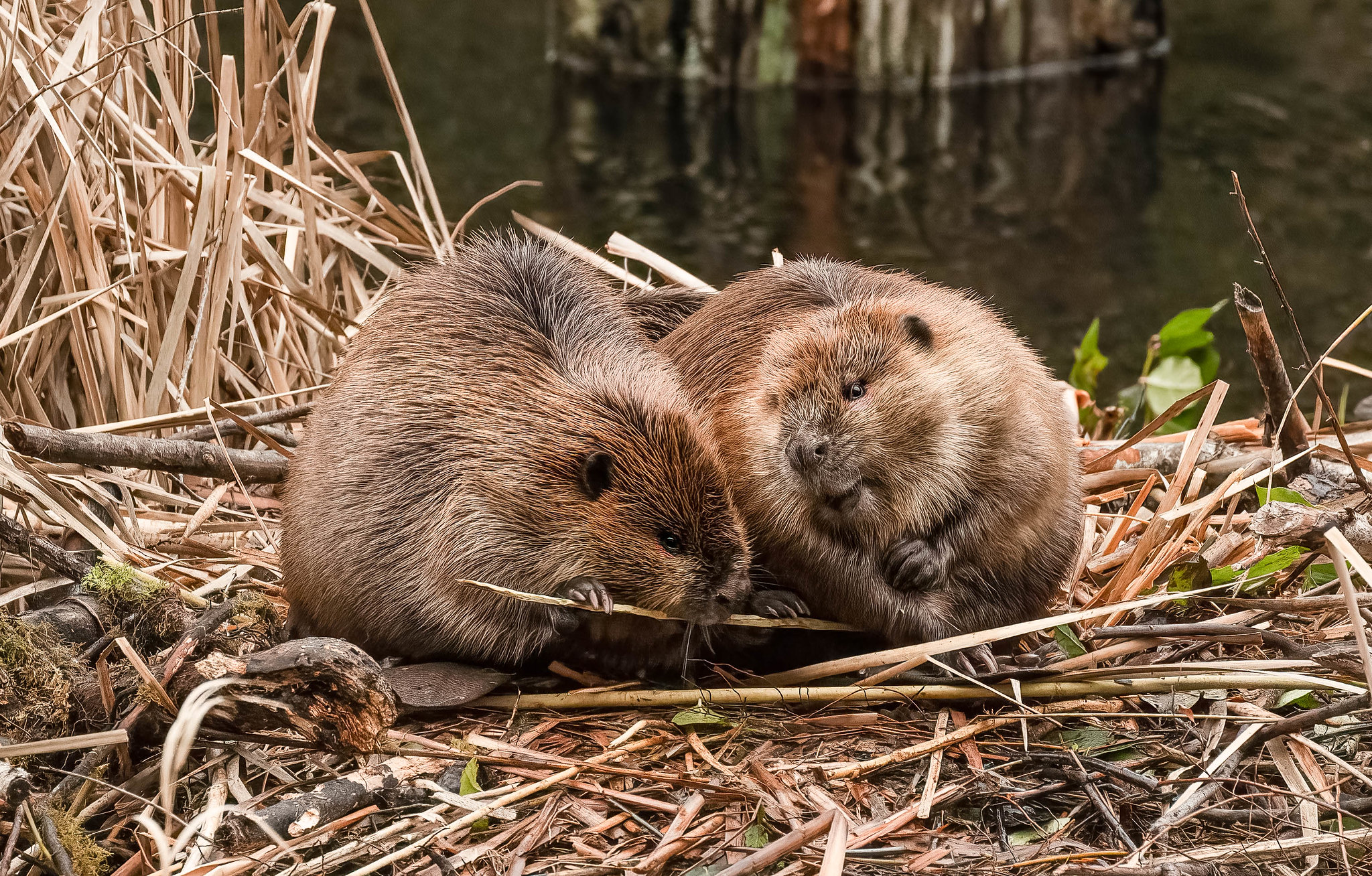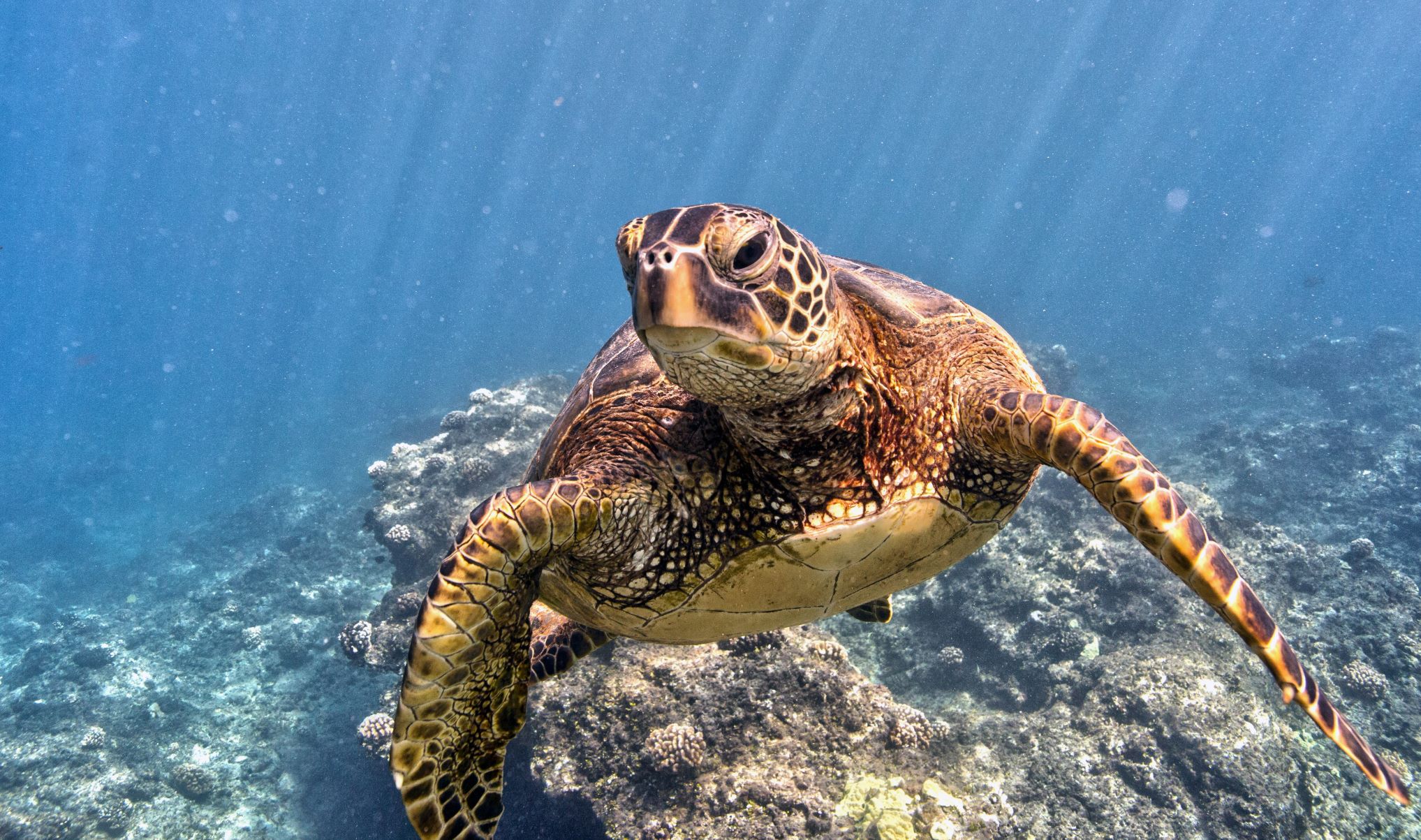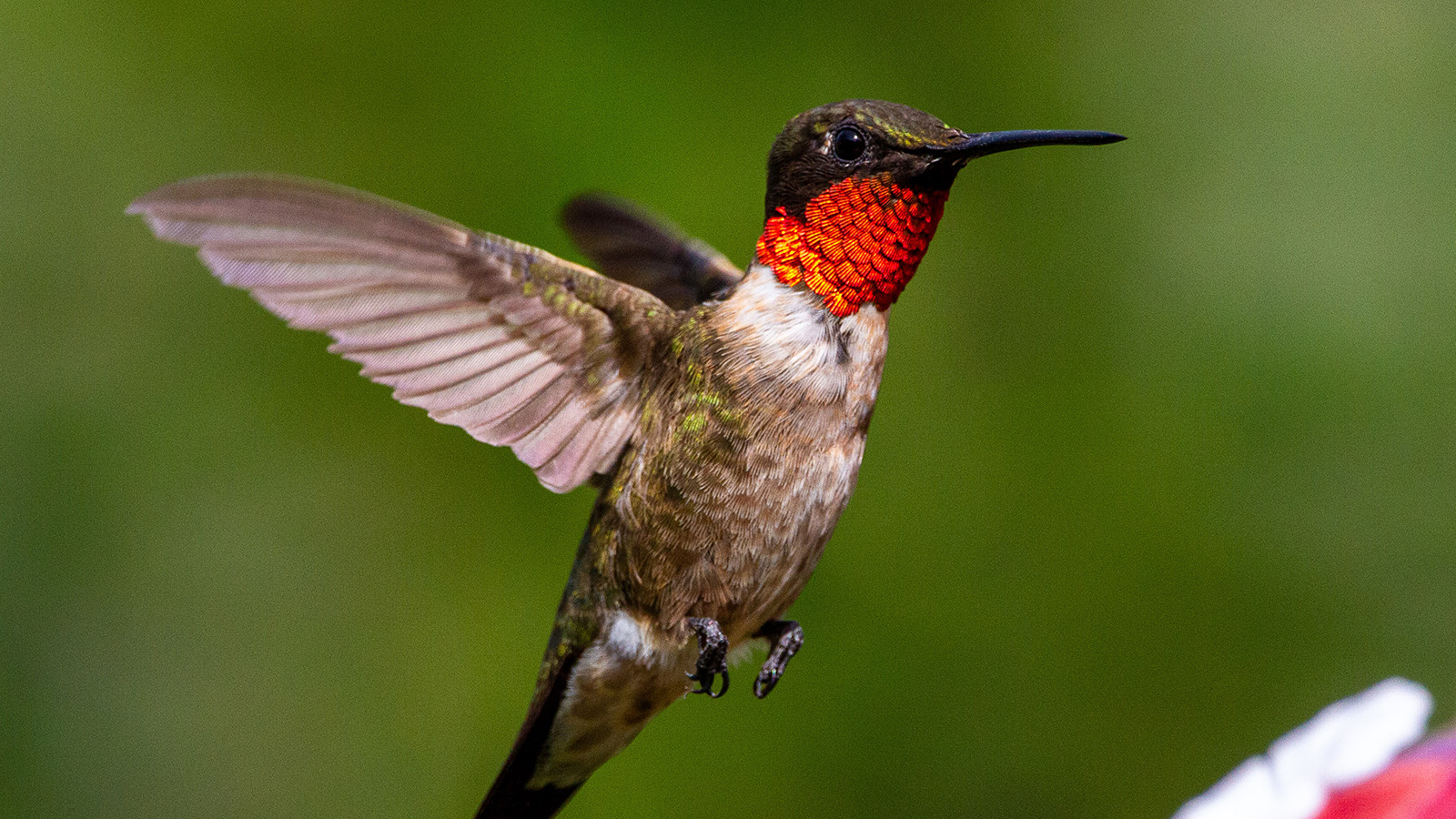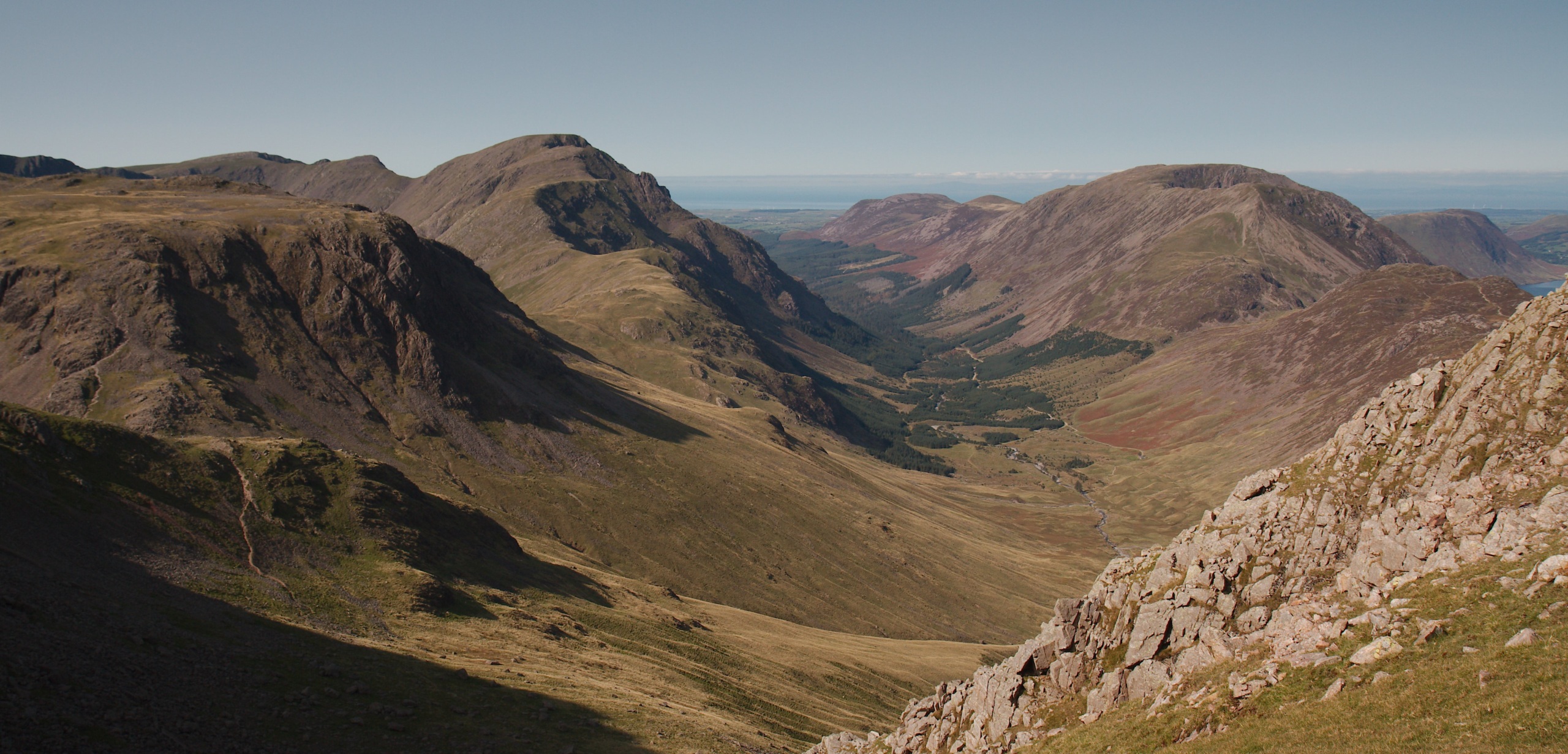
Rewilding: The promise of a hands off approach to conservation
Rewilding initiatives across the world show how leaving nature to do its own thing can help create a more sustainable and biodiverse future.
In September last year, on my annual trip home to the English Lake District, I spent an afternoon doing an eight-mile hike up a well-known local mountain called Pillar. It’s a tough climb – 3,000-ish feet of elevation gain – but as with any mountain peak in the north of England, the payoff is spectacular.
Pillar summit stands at the head of two valleys: Mosedale to the south, and to the north, Ennerdale: a remote, roadless dale dropping down from the mountains toward the sparking expanse of Ennerdale Water, a glacial lake, largely inoculated against the area’s tourist industry by its relative inaccessibility (though apparently it was on the shores of this lake that one notable visitor – an American called William J. Clinton – first proposed to his future wife, Hillary, back in 1973. She turned him down.)
It had been a long time since I’d last looked out over that valley – almost a quarter of a century in fact. And in the years since, big changes have taken place.
As with much of England’s rural north, the landscape of Ennerdale has been shaped by centuries of human management of one kind or another. Thick commercial plantations of Sitka spruce have dominated the lower part of the dale since the 1920s, and stark rectangular gaps in the forests attest to a century of timber harvests. From the late 1800s, natural water courses were channeled and dammed for commercial purposes, and many years of intensive sheep grazing on the upper slopes artificially depleted the valley’s wildlife habitats and biodiversity.
All of this began to change in the early 2000s, when the area’s three main landowners (Forestry England, the National Trust and private utility company United Utilities), in partnership with Natural England (a program of the Department of Environment, Food and Rural Affairs) decided to come together to steer Ennerdale in a different direction: namely, to “let natural processes shape the landscape and ecology… leading towards a wilder, more diverse and resilient place.”
The Wild Ennerdale Partnership has since gained international renown as one of the world’s flagship experiments in “rewilding” – a term first introduced in the United States in the 1990s by members of the radical environmental group Earth First! and now widely recognized by many in the mainstream conservation community as one of several key methods for achieving the large-scale ecosystem restoration necessary to meet the United Nations’ 30×30 conservation goals to protect biodiversity and mitigate climate change. With growing interest in rewilding as a conservation strategy, places like Ennerdale have become valuable case studies in how it’s done, and what it can achieve.
Giving nature the tools to do its thing.
Over the last two decades, the Wild Ennerdale Partnership has radically scaled back the intensive sheep grazing that had degraded the area’s biodiversity and wildlife habitats to allow for the introduction of larger herbivores, including the Galloway cattle that now roam freely around the dale.[1] The spruce plantations have been replaced or interspersed with native trees like juniper and aspen (according to the project’s website, more than 100,000 native trees have been planted so far). Concrete bridges and channels impeding the river that flows through the dale have been removed, allowing natural hydrological processes to unfold with no human interference (dredging, straightening, flood defenses and so on), enabling the organic return of natural wetland habitats.
All of this constitutes a fundamental departure from traditional forms of conservation.
Often, when we think of that term, we think of targeted strategies to protect specific species or habitats: in other words, to protect what already exists. Rewilding, by contrast, takes a more “hands off” approach that seeks to allow areas of land to return naturally to a wild and self-sustaining state with little or no human interference.
This isn’t simply about abandoning land, however, but more a question of providing nature with the tools it needs to enable natural processes to unfold. Allowing nature to take its course, proponents argue, can restore balance and resilience to ecosystems and ultimately enable them to become self-sustaining over the long term.
Enhancing with wolves
One of these “tools” is the practice of reintroducing native species to areas where their populations have been depleted – and in particular, the apex predators and other keystone species that play critical roles in ecosystem dynamics and thus in enhancing overall biodiversity.
Probably the best-known example from North America is the reintroduction of gray wolves to Yellowstone National Park in the 1990s. Wolves had been absent from Yellowstone since the late 1920s, when the last remaining pack was wiped out as a result of the predator control programs of that era. Their absence led to the unchecked growth of populations of large herbivores – notably elk, which devastated the vegetation of Yellowstone’s valleys, leading to the disappearance of beavers, and in turn, to the loss of wetlands and the species that rely on them for their habitat. The reintroduction of wolves effectively reversed this cascade, leading to a drop in elk populations, in turn enabling the regeneration of vegetation and the return of plant and animal species that had disappeared from the area.
Rewilding the world
Similar rewilding projects are now being undertaken all across the globe.
In Europe, under the umbrella organization Rewilding Europe, large-scale initiatives have been established in 10 territories spanning 12 countries across the continent, including the Central Apennines in Italy, the Velebit Mountains in Croatia and the Oder Delta in Germany and Poland.
Elsewhere, the Iberá Wetlands project in Argentina seeks to rewild one of the world’s largest freshwater wetlands and has successfully reintroduced a host of locally extinct species – the jaguar and the giant anteater, among others. Large scale restoration of the blue wildebeest population in the Serengeti has helped to rebalance a degraded ecosystem and turn the region from a net greenhouse gas emitter into a major carbon sink. Since 2014, a joint effort by the World Wildlife Fund and Native Nations has been underway to reintroduce Bison to the Northern Great Plains to conserve and restore healthy grassland ecosystems. The list of similar initiatives grows longer every year.
Not all plain sailing
Inevitably, however, rewilding brings a host of sometimes thorny questions.
The Oostvaardersplassen project in the Netherlands, for example, set out in the 1980s to rewild a barren tract of land with the reintroduction of Konik horses, Heck cattle and a range of other species. But the project quickly found that “letting nature take its course” can be an ugly business, and one which can throw up all manner of ethical and legal quandaries – in this case around whether animal welfare considerations obligated the reserve to intervene to prevent animals from starving to death. Ultimately, after a brutal winter in 2017-2018 caused many of the reserve’s animals to die of starvation, the state stepped in, and hundreds more were shot before they could starve.
The Oostvaardersplassen project highlights the fundamental question of how far the “hands-off” aspirations of rewilding can go before other considerations make some degree of active management necessary and/or desirable. What’s the right balance here? Proponents are still figuring it out.
There’s also the issue of the conflict between wilderness and agriculture. In France, for example, one high-profile illustration of these tensions is the case of the wolf. Hunted to extinction by the 1930s, wolves began to reappear in France in the early 1990s, and the subsequent growth in their populations enabled by strict legal protections has led to wolf attacks on livestock becoming a major problem for farmers, and hence provoked a backlash from the agricultural sector. Again, how best to mitigate these issues, and what exactly is the right balance?
* * *
These are open questions. But the growing number of successful rewilding initiatives all over the world – and the benefits they have delivered in restoring and protecting natural ecosystems – show that it is well worth the effort to resolve them.
The efforts of the Wild Ennerdale partnership in Cumbria have led to a spectacular return of wildlife to the dale. Increasingly diverse habitats and expanding woodland have enabled a sharp rise in the number of bird species, including the return of the long-absent green woodpecker. The marsh fritillary butterfly, previously extinct in this part of the U.K., is back, as is the marvelously named bilberry bumblebee. Wild juniper bushes – of which only about 10 remained in Ennerdale prior to the project – are now flourishing throughout the dale. The newly restored river is a major spawning site for the once near-extinct Arctic charr, whose population has exploded, as well as other freshwater aquatic species, including critically endangered freshwater mussels and others.
Elsewhere in the U.K., in the early 2000s, the owners of Knepp Castle in West Sussex made the decision to transform 3,500 acres of farmland in the castle grounds into a wildland area. Grazing animals, including Exmoor ponies, Tamworth pigs and longhorn cattle, were introduced, and the land was left alone to regenerate naturally. The estate has since seen the return of flora and fauna in abundance, including rare species like turtle doves, barbastelle bats, nightingales, and the purple emperor butterfly, for whom the wild foliage of the estate has become an important breeding ground. In August 2023, two wild beavers brought to Knepp from Scotland welcomed their first offspring: the first beavers to be born in the wild in this part of England in 500 years.
Even the Oostvaardersplassen project, despite its problems, ultimately succeeded in creating a flourishing wetland reserve, with the return of rare bird species, the proliferation of wild horses, and the recovery of vegetation communities resulting in a remarkable resurgence of biodiversity.
Rewilding initiatives springing up across the world continue to highlight the difficult choices and dilemmas inherent in this mode of conservation. But they also show very clearly its potential for large-scale ecosystem restoration. While obviously appropriate only in certain types of places, it’s increasingly clear that simply allowing nature to do its own thing can be a powerful tool in the conservation toolbox, with major potential to help pave the way to a more sustainable and biodiverse future.
[1] Galloways do more for ecosystems than they’re often given credit for, unwittingly distributing seeds on their travels and breaking up the ground to create space for heather, bilberries, wildflowers and other flora to thrive.
Topics
Authors
James Horrox
Policy Analyst, Frontier Group
James Horrox is a policy analyst at Frontier Group, based in Los Angeles. He holds a BA and PhD in politics and has taught at Manchester University, the University of Salford and the Open University in his native UK. He has worked as a freelance academic editor for more than a decade, and before joining Frontier Group in 2019 he spent two years as a prospect researcher in the Public Interest Network's LA office. His writing has been published in various media outlets, books, journals and reference works.
Find Out More

A look back at what our unique network accomplished in 2023

Nature’s little helpers: The semiaquatic heroes you didn’t know you needed

Marine protected areas are the best hope for the ocean – but only if the protections are real


